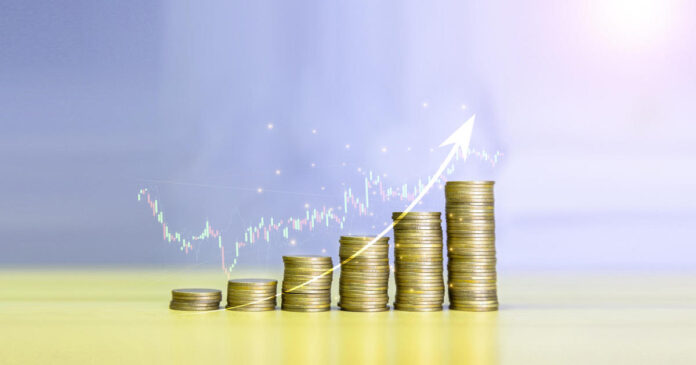Gold Prices Surge: A Historical Perspective Gold prices have recently reached an all-time high, reflecting a confluence of economic and geopolitical factors . Traditionally seen as a safe-haven asset, gold tends to thrive during periods of uncertainty. Investors flock to gold during times of financial instability, inflation, or geopolitical conflicts, making it a barometer of global economic health. As the world grapples with various challenges, the rising demand for gold underscores its enduring value.
The Role of Rate Cuts in Gold Demand
One of the primary drivers behind the soaring gold prices is the series of rate cuts implemented by central banks around the globe. Lower interest rates diminish the opportunity cost of holding non-yielding assets like gold. When borrowing becomes cheaper, more capital flows into commodities, including gold, as investors seek to hedge against inflation and currency devaluation. This trend has only intensified with recent announcements from major central banks, prompting a surge in gold investments.
Geopolitical Conflicts Fueling Investor Anxiety
In addition to economic policies, ongoing geopolitical conflicts are amplifying demand for gold. Tensions in regions such as Eastern Europe and the Middle East have created a climate of uncertainty, driving investors toward safer assets. Heightened risks associated with potential military actions and diplomatic standoffs contribute to the allure of gold. As countries grapple with complex geopolitical landscapes, gold remains a steadfast refuge for those looking to preserve their wealth.
The Future of Gold Prices: What Lies Ahead?
Looking ahead, analysts speculate that gold prices may continue to rise as both economic conditions and geopolitical tensions evolve. If central banks maintain a low-interest-rate environment and geopolitical instability persists, gold could see further gains. However, the market remains unpredictable, with potential influences such as changes in monetary policy or shifts in global alliances. Investors are advised to remain vigilant and informed, as the dynamics of supply and demand will ultimately shape the future of gold prices.
In summary, the recent surge in gold prices to all-time highs can be attributed to a combination of rate cuts and geopolitical conflicts that drive demand for this timeless asset. As investors navigate this complex landscape, gold remains a crucial element in their portfolios, reflecting both a hedge against uncertainty and a safeguard for wealth.
Sure! Here’s an expanded version of the topic “Gold prices at all-time high: Rate cuts, geopolitical conflicts drive demand,” complete with points under each heading:
The Role of Rate Cuts in Gold Demand
1 Lower Opportunity Costs
Central banks worldwide have implemented significant rate cuts to stimulate economic growth. Lower interest rates reduce the opportunity cost of holding gold, making it more attractive compared to interest-bearing assets.
2. Increased Liquidity
Rate cuts typically lead to greater liquidity in the market, encouraging investments in commodities. This influx of capital boosts demand for gold as investors look for reliable stores of value.
3. Inflation Hedge
With the potential for inflation to rise due to increased money supply, gold serves as a protective hedge. Investors are likely to allocate more funds to gold to safeguard their purchasing power.
Geopolitical Conflicts Fueling Investor Anxiety
1. Heightened Tensions
Ongoing geopolitical conflicts, such as those in Eastern Europe and the Middle East, create uncertainty that drives investors to gold. The perception of instability often leads to increased volatility in financial markets.
2. Safe Haven Status
In times of geopolitical strife, gold is viewed as a stable asset. It is not subject to the same risks as stocks or bonds, making it a preferred choice for risk-averse investors.
3. Market Reactions
Events such as military escalations or diplomatic breakdowns often result in immediate spikes in gold prices, reflecting the market’s swift reaction to perceived threats.
The Future of Gold Prices What Lies Ahead?
1. Economic Recovery vs. Ongoing Conflicts
As economies recover from recent downturns, the balance between recovery and ongoing geopolitical tensions will heavily influence gold prices. A stable economic environment may temper gold’s appeal, while unresolved conflicts could sustain high demand.
2. Potential Rate Increases
Future shifts in monetary policy, particularly any moves to raise interest rates, could impact gold prices. Investors will need to stay alert to central bank announcements and economic indicators.
3. Diversification Strategies
As gold prices fluctuate, investors may continue to diversify their portfolios, using gold as a strategic component to mitigate risks associated with other asset classes.
In summary, the all-time high in gold prices is driven by a mix of economic policies and geopolitical uncertainties. Rate cuts create an environment conducive to gold investment, while geopolitical conflicts add layers of demand as investors seek safety in turbulent times. As we look to the future, the interplay between these factors will determine the trajectory of gold prices in the global market.





























